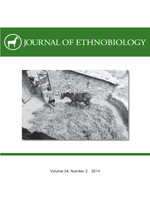The present paper examines the different types of plant and animal names used in Kakataibo (Pano, Peru) in terms of the typology of ethnobiological nomenclature proposed by Berlin et al. (1973; slightly modified in Berlin 1992). While doing so, this paper highlights and discusses the major issues posited by the Kakataibo ethnobiological lexicon, which mainly arise due to the pervasive presence of specific-folk generic polysemy in the language. More precisely, this paper shows that the pervasive presence of this type of polysemy creates a type of contrast set, whose members combine the taxonomic properties of secondary names and complex primary names of the productive type. This is a widespread property of the Kakataibo ethnobiological taxonomic system, which invites us to rethink the distinction between these two types of ethnobiological nomenclature. A comparison of the Kakataibo data with data from other Pano languages is also offered in this paper.
How to translate text using browser tools
1 July 2014
Name Types, Polysemy and Contrast Sets in Kakataibo Ethnobiological Nomenclature (Pano, Peru)
Roberto Zariquiey
ACCESS THE FULL ARTICLE
It is not available for individual sale.
This article is only available to subscribers.
It is not available for individual sale.
It is not available for individual sale.
<
Previous Article
|

Journal of Ethnobiology
Vol. 34 • No. 2
July 2014
Vol. 34 • No. 2
July 2014
ethnobiology
Kakataibo
nomenclature
Pano
polysemy




